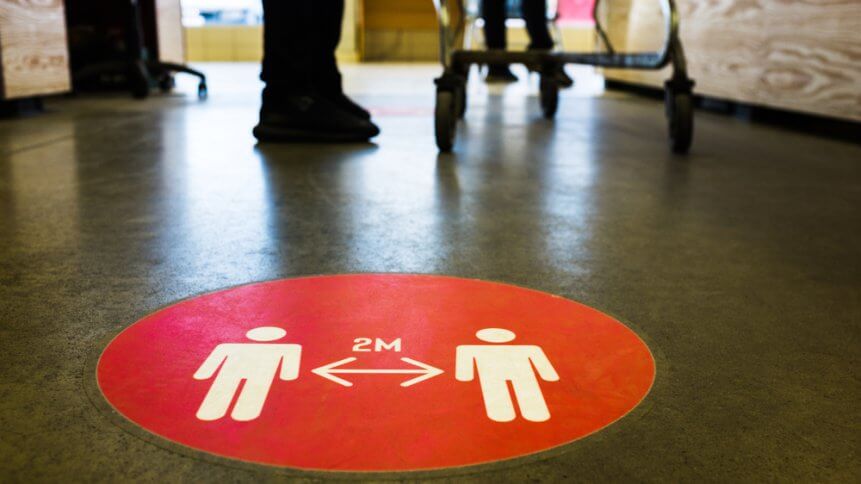Entering a new era of retail – the touchless shopping experience

- Retailers are slowly reopening outlets to welcome a returning wave of consumers
- But a large portion (87%) of US shoppers are fearful of shopping in stores
- E-commerce experienced a boom in the thick of the pandemic – will things return to normal?
As economies are gradually reopening with cafes and bars opening their doors to eager patrons, retail is awakening from months of inactivity. While retailers of all sizes are lifting up shutters, the pandemic has led store managers to adopt some new measures such as more regular cleaning and maintenance of sanitation in store.
READ NEXT

M-commerce is the new e-commerce
Besides that, retailers are also welcoming a new set of customer expectations and needs.
According to a consumer survey by Shekel, a majority (87%) of US shoppers prefer to shop in stores with “touchless or robust self-checkout options.” It was found that two-thirds of consumers pay using “self-checkout, touchless self-checkout or frictionless micro-markets,” whereas less than one-third shop online.
Another study found that about 60% of American shoppers are afraid of shopping in a grocery store due to the pandemic and 73% are shopping less in person. This is based on a new C+R Research report.
Looking at these statistics, the retail sector is in for a huge remodeling to satisfy the needs of current consumers. In general, retailers would need to reassure the fears and anxieties of consumers while providing the best and seamless shopping experience.
Starting with cleanliness, besides maintaining a high level of hygiene in a shopping area, hand sanitizers will be a norm.
Daniel Binder, a partner at Columbus Consulting, who managed Asia-based supply chains during the SARS and H1N1 pandemics, shared with Retail Dive on the widespread use of hand sanitizer.
“There will be hand sanitizer everywhere you go, payment options that don’t involve touchscreens or cash,” Binder stated
However, Binder continued that “this will pass, there will be a return to normal.” Ultimately, “the DNA of the brand is still going to be critically important,” he added.
Another common sight would be the implementation of social distancing in stores, the number of customers entering and shopping would be limited.
Emily Albright Miller, vice president of strategy at Big Red Rooster, JLL’s in-house design firm, said a change in traffic patterns in physical stores would be the norm: “One-way traffic patterns will become the norm, where customers must follow a specific, marked path through the store.”
The concept of touchless shopping experience will be more prevalent and could take the form of “voice-activated technologies to specific entry or exit doors,” Miller said.
YOU MIGHT LIKE

As e-commerce amid COVID-19 booms, so does fraud
Even though positive signs of change are on the way for physical stores, online platforms will undergo some shifts as well post-pandemic.
Adobe Analytics revealed US daily e-commerce sales increase by 49% in April as compared to March (before mass closure of retailers).
A natural reaction for retailers and consumers would be to shift towards digital platforms and interactions.
At this point, retailers are hit with the hard reality that digital presence is essential. Taking into account a rising e-commerce market and also evolving consumer trends that are attracted to the convenience online shopping and delivery offers.
Despite the pandemic highlighting the importance of e-commerce and accelerating its adoption, brick-and-mortar still remain relevant for consumers craving for interaction and the shopping experience.
What’s important is to know that retailers are preparing for a wave of shoppers with a different frame of mind than before the pandemic and touchless shopping may be the answer.








